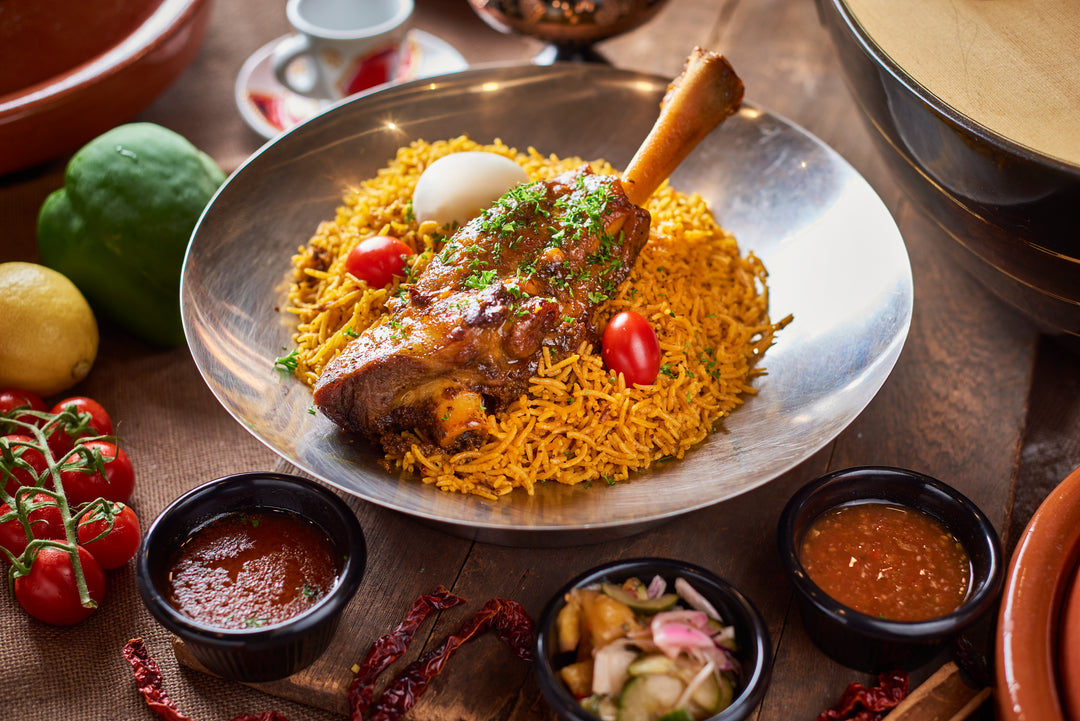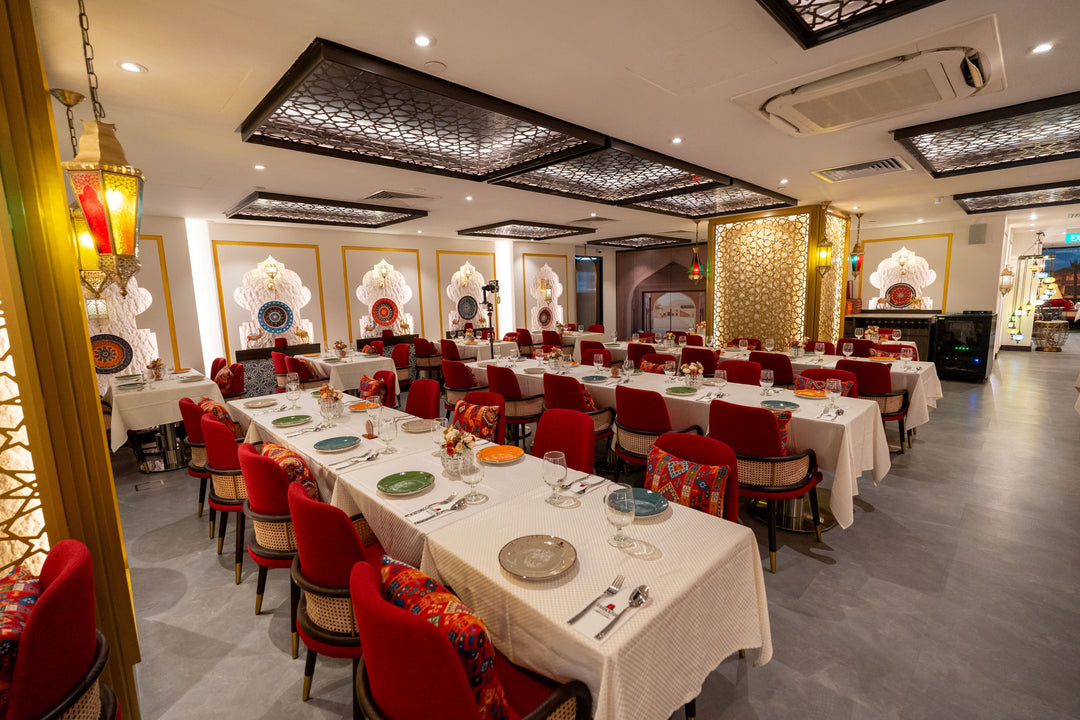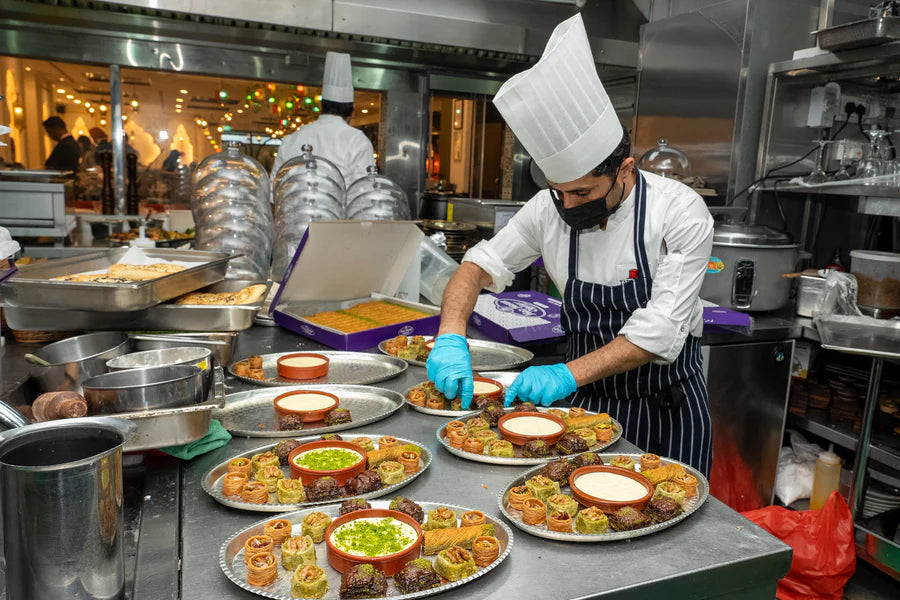Exploring Middle Eastern Sweets: A Journey Through Traditional Desserts

Middle Eastern cuisine is renowned for its rich flavors, fragrant spices, and intricate culinary traditions. Among its many culinary treasures, Middle Eastern sweets hold a special place, offering a delightful combination of textures, aromas, and tastes that have been perfected over centuries. From the syrup-soaked delights of baklava to the delicate flavors of rosewater-infused desserts, Middle Eastern sweets are more than just indulgences—they are a reflection of history, culture, and hospitality.
In this blog, we will take a deep dive into the world of Middle Eastern sweets, exploring their origins, key ingredients, and the most popular desserts that continue to captivate food lovers around the world.
The Cultural Significance of Middle Eastern Sweets
Desserts in the Middle East are not just an afterthought; they play a crucial role in social and religious celebrations. Whether it’s a festive gathering, a wedding, or the holy month of Ramadan, sweets are an essential part of every occasion. They symbolize generosity, hospitality, and togetherness, often served alongside Arabic coffee or mint tea as a gesture of warmth and welcome.
Many traditional sweets have deep-rooted historical significance, with recipes passed down through generations. The influence of various civilizations, including the Ottomans, Persians, and Arabs, has contributed to the diversity of Middle Eastern desserts, making them an integral part of the region’s gastronomic heritage.
Key Ingredients in Middle Eastern Sweets
Middle Eastern desserts are characterized by their use of natural ingredients that enhance both flavor and texture. Some of the most commonly used ingredients include:
-
Honey and Syrup – Used to sweeten desserts like baklava and kunafa, adding a rich, sticky texture.
-
Nuts – Pistachios, almonds, and walnuts are widely used for crunch and depth of flavor.
-
Rosewater and Orange Blossom Water – These floral waters lend a distinctive aromatic essence to many sweets.
-
Semolina – A key ingredient in cakes and pastries, giving them a slightly grainy texture.
-
Dates – Often used as a natural sweetener and filling in many Middle Eastern confections.
-
Tahini – A sesame paste that adds a nutty richness to some desserts.
-
Yogurt and Cheese – Found in pastries like knafeh, adding a creamy and tangy contrast to sweet flavors.
Popular Middle Eastern Sweets
1. Baklava: The Iconic Layered Pastry
No discussion of Middle Eastern sweets is complete without mentioning baklava. This rich, flaky dessert is made with layers of phyllo pastry, filled with chopped nuts, and drenched in syrup or honey. Originating from the Ottoman Empire, baklava remains a favorite across the Middle East, Greece, and Turkey.
Why It’s Loved:
-
Crispy, buttery layers with a sweet, nutty filling.
-
A perfect balance of textures and flavors.
-
Often flavored with cinnamon, cardamom, or rosewater for an aromatic touch.
2. Kunafa: The Ultimate Cheese Pastry
Kunafa (or knafeh) is a beloved dessert made with shredded phyllo dough (kataifi) or semolina, layered with sweet cheese or custard, and soaked in a fragrant sugar syrup. It is particularly popular in Palestine, Lebanon, and Jordan.
Why It’s Loved:
-
A delightful contrast between the crispy crust and gooey cheese filling.
-
Often topped with crushed pistachios for added crunch.
-
Best enjoyed warm, making it an irresistible treat.
3. Basbousa: The Semolina Cake
Basbousa (also known as hareeseh or revani) is a sweet, moist semolina cake soaked in syrup and often topped with almonds or coconut. This dessert is popular in Egypt, Lebanon, and Syria.
Why It’s Loved:
-
Soft, spongy texture with a hint of citrus or floral essence.
-
Perfectly balances sweetness with lightness.
-
Simple yet incredibly satisfying.
4. Maamoul: The Stuffed Shortbread Cookie
Maamoul is a traditional shortbread cookie filled with dates, nuts, or figs. These cookies are often enjoyed during religious holidays such as Eid and Christmas.
Why It’s Loved:
-
Buttery, crumbly texture with a sweet, spiced filling.
-
Often imprinted with intricate designs using wooden molds.
-
Pairs wonderfully with Arabic coffee or tea.
5. Halva: The Nutty Confection
Halva is a dense, sweet confection made from tahini (sesame paste) or semolina, combined with sugar or honey. It is enjoyed across the Middle East and comes in various flavors, including pistachio, chocolate, and vanilla.
Why It’s Loved:
-
Rich, nutty flavor with a melt-in-the-mouth texture.
-
Can be found in both crumbly and fudge-like varieties.
-
A great source of protein and healthy fats.
6. Atayef: The Stuffed Pancakes
Atayef are mini pancakes filled with sweet cheese, nuts, or cream, and are particularly popular during Ramadan. They can be deep-fried for a crispy texture or served soft with syrup.
Why It’s Loved:
-
Versatile fillings make them a customizable treat.
-
Crispy or soft—both variations are equally delicious.
-
Traditionally served as a festive dessert.
Modern Twists on Traditional Middle Eastern Sweets
While traditional Middle Eastern sweets continue to be cherished, modern adaptations have emerged, blending classic flavors with contemporary culinary techniques. Some innovative takes include:
-
Baklava Cheesecake – A fusion of classic baklava and creamy cheesecake.
-
Chocolate-Dipped Maamoul – A rich, decadent twist on the traditional cookie.
-
Matcha Kunafa – Infusing kunafa with matcha for a unique flavor profile.
-
Pistachio Basbousa with Coconut Cream – Adding a tropical touch to the traditional semolina cake.
Tips for Enjoying Middle Eastern Sweets at Home
-
Pair with the Right Beverage – Arabic coffee, mint tea, or spiced chai complement the flavors of these desserts perfectly.
-
Use Fresh Ingredients – Fresh nuts, high-quality honey, and fragrant rosewater make a huge difference.
-
Balance the Sweetness – Many Middle Eastern sweets are syrup-heavy, so enjoy them in moderation.
-
Experiment with Spices – Cardamom, cinnamon, and nutmeg add depth to homemade desserts.
Conclusion: A Sweet Tradition Worth Savoring
Middle Eastern sweets are a testament to the region’s rich culinary heritage, blending tradition, flavor, and artistry in every bite. Whether you prefer the crisp layers of baklava, the syrup-soaked softness of kunafa, or the buttery crumble of maamoul, there is something for everyone in this vast and flavorful world of desserts.
So why not treat yourself to a taste of the Middle East? Indulge in these timeless delicacies and experience the magic of centuries-old traditions in every bite!









